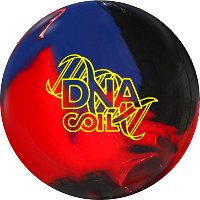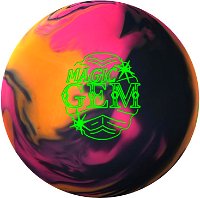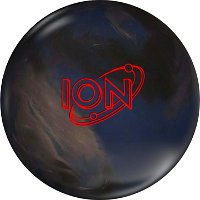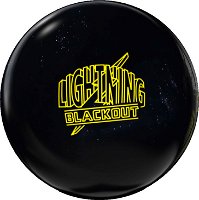Take $5 off your purchase of $50+ today!
Coupon excludes instant bonus items, hot deal items, and gift certificates.
Coupon excludes instant bonus items, hot deal items, and gift certificates.
Bowling Terms Crystal Clear
Bowling Terms Crystal Clear
Posted Jan 20, 2012 In: Tips
By Bowling.com
By Bowling.com
 It's funny how when you start something new, not only is there a learning curve for the skill involved but also the jargon is important to have down. Here's a very comprehensive list, Do you know all of them? Thanks to the Ultimate Bowling Guide for these terms. Hopefully there are a few that you've heard but never quite understood. Now you know and "knowing is half the battle!".
It's funny how when you start something new, not only is there a learning curve for the skill involved but also the jargon is important to have down. Here's a very comprehensive list, Do you know all of them? Thanks to the Ultimate Bowling Guide for these terms. Hopefully there are a few that you've heard but never quite understood. Now you know and "knowing is half the battle!".
- Address: Bowler’s starting position.
- Alley: playing surface, made of maple, pine or urethane boards; urethane lanes are becoming more popular than wood
- All the way: Finishing a game with nothing but strikes.
- Anchor: The last person to roll in a team competition.
- Angle: The direction in which the ball travels when going into the 1-3 pocket, 1-2 for left hand bowlers.
- Approach: Part of the lane from the back of the ball return area to the foul line.
- Armswing: The arc of the bowling arm and hand from the first move toward the line until the delivery of the ball over the line.
- Baby ball: To throw too delicate or release too carefully.
- Back ends: The last 6 feet of the lane.
- Backup: A ball that falls to the right for right-hand bowlers and left for left-hand bowlers.
- Balk: To interfere or cause another bowler to stop or not complete in their normal actions.
- Ball rack: the rack used to store house balls or where the ball return rests balls before a turn.
- Ball return: Track between the lanes the ball rolls on when being returned to the rack.
- Balsa: A powerless hit on the headpin.
- Bedposts: A 7-10 split.
- Belly the ball: Increase the width of a hook from an inside starting piont.
- Bench work: Conversation or actions meant to upset an opponent.
- Bender: Hook or curve shot that comes close to the channel before breaking into the pocket.
- Big fill: Nine or ten pins on a spare, or double on a strike.
- Big five: Spare of three on one side and two on the other.
- Blind: Score allowed for an absent member
- Blow: A missed spare.
- Blow a rack: A solid strike.
- Blowout: Downing all the pins but one.
- Box: A single frame. .
- Break: A lucky shot.
- Bucket: Four-pin diamond on the sides or the center of the lane.
- Buzzard: Three open frames in a row.
- Carry: Ability of the ball to knock down pins.
- Chicken wing: When a bowler’s elbow gets away from his body during a swing.
- Choke: Failure to accomplish objective.
- Chop: Chopping the front pin of a spare while a pin behind or to the left or right remains.
- Clutch: A pressure situation.
- Come up: Hook in the pocket caused by a spin on the axis.
- Conversion: Knocking down all the pins that remain with your second ball.
- Crawler: A strike made by missing the head pin.
- Curtain: missing in a final frame when a spare would have won.
- Curve: Ball that breaks from right to left.
- Cutter: A hook that slices the pins down.
- Deflection: The ball when it comes into contact with pins and then angles away to the right or left.
- Delivery: Preparation, Release and Follow-through.
- Deuce: A 200 average.
- Dive: A ball that hooks at the last second.
- Double: Two strikes in a row.
- Double wood: when one pin is directly behind the other.
- Dump the ball: Releasing the ball without bending of the knee.
- Dutch 200: A 200 game scored alternating strikes and spares.
- Fence posts: A 7-10 split.
- Fit split: A split where it is possible for the ball to hit both pins.
- Five-bagger: Five strikes in a row.
- Flat ball: unproductive ball
- Follow-through: The motion after release. Should
- Foul: Touching or going beyond the foul line.
- Foul line: The mark that determines the beginning of the lane.
- Foundation: A strike in the ninth frame.
- Grab: The friction between the lane and the ball.
- Grandma¹s teeth: An array of pins left standing.
- Graveyards: Low score lanes.
- Gutter: Drop offs about 10 inches wide to the right and the left of the lane to guide the ball to the pit.
- Gutter ball: A ball that goes into the gutter. .
- Half hit: Between a full and light hit.
- Handicap: Pins awarded to weak players or teams in an attempt to even out the game.
- Head pin: Front pin of a rack.
- Higher: More to the left or right.
- Home alley: Favorite lane for individuals or a team.
- Honey: A good ball.
- Hook: A ball that breaks to the left or right.
- House ball: Bowling balls provided by the alley.
- Inside: A starting point near the center of the lane.
- Jam: Force the ball high inside the pocket.
- Kegler: A bowler.
- Kickoff: Smooth ball delivery.
- Kingpin: The headpin or the number 5 pin.
- Kitty: Money from team members for misses, and other set fines.
- Late 10: When the 10 pin hesitates and is the last to go down on a strike.
- Leadoff man: First manto bowl in a team game.
- Light seven: A hit too light on either side of the head pin.
- Line: The path a bowling ball takes.
- Lofting: Throwing the ball onto the lane rather than rolling it.
- Logs: Very heavy pins, used for practice.
- Looper: An extra-wide hook ball.
- Loose hit: A light pocket hit.
- Love tap: A tap from a moving pin which knocks it down.
- Match play: A portion of a tournament where bowlers are pitted against each other.
- Messenger: A pin that comes across the lane after all the others have fallen down.
- Miss: A missed spare.
- Mixer: A ball that causes pins to bounce around.
- Moat: A nickname for the gutter.
- Move in: To start from the center of the approach.
- Move out: To start from a corner position on the approach.
- Nose hit: To hit the pins dead center.
- On the nose: To hit to the headpin dead center.
- Open bowling: Nonleague plays for fun or practice opposite league nights.
- Out of bounds: Area on the lanes where a ball won't make it to the pocket.
- Outside: Corner position of playing lanes.
- Over-turn: To apply too much spin to the ball.
- Par: A game score of 200.
- Pinching the ball: To grip the ball too hard.
- Pin deck: Area 60' from the foul line.
- Pit: Space at end of lane where ball and pins end up.
- Pitch: Angle in which holes in bowling ball are drilled.
- Platform: The parts of the lane from the very back of the ball return area up to the foul line.
- Point Shot: Starting from the first arrow and throwing over first arrow.
- Position rounds: Parts of a league schedule which call for teams.
- Pot game: Competition in which two bowlers place a stake.
- Powerhouse: A strong ball that strikes.
- Puddle: A gutter ball.
- Railroad: A wide open split.
- Rap: When a single pin remains on a good hit.
- Rat club: A team that shoots low scores for one game.
- Release: The hand motion as ball is rolled onto a lane.
- Reset: Resetting the pins.
- Return: The track which balls roll from pit to the rack.
- Revolutions: The number of turns a ball takes when rolling from release to pins.
- Rotation: The spin to the ball at the moment of delivery.
- Runway: Starting area.
- Sanctioned: Competition in accordance with American Bowling Congress and Women¹s International Bowling Congress rules.
- Sandbagger: A bowler who keeps his average down in order to receive a higher handicap.
- Scenic route: The path taken by a sharp curve ball.
- Separation: The distance you allow between your standing position and where you want the ball to go.
- Shadow ball: A ball rolled in practice without any pins set.
- Shotgun: Rolling a ball from the hip.
- Sixpack: Six strikes in a row.
- Slide: The last step of delivery.
- Snow plow: A ball that clears all the pins.
- Spare: All pins knocked down with two balls.
- Spare leave: Pins standing after the first ball is rolled.
- Spiller: A light-hit strike.
- Splasher: A strike where the pins are knocked down quickly.
- Splice: An area of lane where maple and pine boards join.
- Split: A spare leave in which the headpin is down.
- Spot bowling: Target on lane at which the bowler can aim.
- Steal: To get more pins than you deserve on a strike.
- Strike: All ten pins go down.
- Strike out: To get all three strikes in the tenth frame.
- String: Three or more strikes in a row.
- Stroke: The arm and hand motion during delivery over the foul line.
- Sweepstakes: A bowling tournament.
- Swiss cheese ball: A ball used in pro shops to establish a bowler's finger size and span for drilling.
- Tandem: Two pins one behind the other.
- Tap: When a pin stays standing on a perfect strike.
- Team captain: A lead team member responsible for all members being present, arranging a substitute, and determining team lineup.
- 300 game: A perfect game of 12 strikes in a row.
- Three quarter bucket: Three of the four pins of the bucket.
- Throwing rocks: Racking up strikes with multiple speed balls.
- Tickler: When the 6-pin gently topples the 10-pin.
- Track: Area most used on lane
- Tripped 4: When the 2 pin takes out the 4 pin.
- Tumbler: A strike where the pins appear to fall individually.
- Turkey: Three strikes in a row.
- Venting: Drilling a small hole into a bowling ball to relieve suction on the thumb hole.
- Wrist master: One of the many accessories worn by bowlers to help keep a firm wrist during backswing.
- X: Symbol for strike.
- Yank shot: When a bowler hangs onto the ball too long.
- Zero in: Find the right strike spot on a lane.
- /: Symbol for a spare.
Tagged As:














